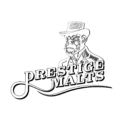Glenlossie
Introduction:
Located in the eastern part of Speyside, Glenlossie distillery does not have any official bottlings of its own. However, it is featured in the Diageo Flora and Fauna range and has a Manager’s Dram. Independent bottlings have been released by companies like Gordon & MacPhail, Douglas Laing, and Signatory Vintage. Glenlossie has also been a component in various blends, including Haig’s Blends.
Production:
The water used in Glenlossie distillery is sourced from the local Bardon Burn. The distillery has a production capacity of 1.1 million liters. It utilizes a full lauter mash tun, capable of holding over 8 tonnes of ingredients.
Pot Stills:
Glenlossie distillery is equipped with three wash stills and two spirit stills. The wash stills have a capacity of 15,600 liters each, while the spirit stills can hold 13,500 liters. Both the wash and spirit stills have pear-shaped designs with wide spherical lids and gradually narrowing tall, conical necks. The spirit stills use a ‘purifier’ that acts as a mini-condenser, increasing reflux and resulting in a lighter, more delicate whisky.
Maltings:
Glenlossie sources its maltings from Burghead Maltings, an industrial site located in Elgin. The maltings used have a gentle peatiness, adding a subtle smoky character to the whisky.
Warehouses:
The distillery has ten dunnage warehouses on-site, capable of storing up to 200,000 casks of malt whisky. Glenlossie ages its single malt in a combination of Sherry and American oak casks.
History:
Glenlossie is unique in that it houses two distilleries on its site. It was founded in 1876 by John Duff, the former manager of Glendronach distillery. In 1919, Glenlossie was purchased by DCL (Distillers Company Limited), later transferred to Scottish Malt Distillers in 1930, and eventually became part of Diageo through a merger. Mannochmore distillery was built on the same site in 1971. Although there are no official bottlings from Glenlossie, it continues to operate under Diageo’s management.
Visitor’s Centre:
Unfortunately, Glenlossie does not have a visitor’s center, and tours of the facility are not available.
Visitor information:
Glenlossie Distillery
Glenlossie Rd
Birnie
Elgin
IV30 3SS
Tel: +44 (0)1343-862000
Information about the Distillery: |
|
| Number of bottles: | 0 Bottles |
| Country, Region: | Scotland, Speyside |
| Coordinates: | -3.320139 57.598762 |
| Status: | Active |
| Company: | Diageo |
| Still 1: | 3 x 15,600 l Pear |
| Still 2: | 3 x 13,500 l Pear |
| Fermenters: | 8 x 40,000 l |
| Mashtun: | 8 t |
| Founding year: | 1876 |
| Distillery output: | 1,100,000 l |
Introduction:
Located in the eastern part of Speyside, Glenlossie distillery does not have any official bottlings of its own. However, it is featured in the Diageo Flora and Fauna range and has a Manager’s Dram. Independent bottlings have been released by companies like Gordon & MacPhail, Douglas Laing, and Signatory Vintage. Glenlossie has also been a component in various blends, including Haig’s Blends.
Production:
The water used in Glenlossie distillery is sourced from the local Bardon Burn. The distillery has a production capacity of 1.1 million liters. It utilizes a full lauter mash tun, capable of holding over 8 tonnes of ingredients.
Pot Stills:
Glenlossie distillery is equipped with three wash stills and two spirit stills. The wash stills have a capacity of 15,600 liters each, while the spirit stills can hold 13,500 liters. Both the wash and spirit stills have pear-shaped designs with wide spherical lids and gradually narrowing tall, conical necks. The spirit stills use a ‘purifier’ that acts as a mini-condenser, increasing reflux and resulting in a lighter, more delicate whisky.
Maltings:
Glenlossie sources its maltings from Burghead Maltings, an industrial site located in Elgin. The maltings used have a gentle peatiness, adding a subtle smoky character to the whisky.
Warehouses:
The distillery has ten dunnage warehouses on-site, capable of storing up to 200,000 casks of malt whisky. Glenlossie ages its single malt in a combination of Sherry and American oak casks.
History:
Glenlossie is unique in that it houses two distilleries on its site. It was founded in 1876 by John Duff, the former manager of Glendronach distillery. In 1919, Glenlossie was purchased by DCL (Distillers Company Limited), later transferred to Scottish Malt Distillers in 1930, and eventually became part of Diageo through a merger. Mannochmore distillery was built on the same site in 1971. Although there are no official bottlings from Glenlossie, it continues to operate under Diageo’s management.
Visitor’s Centre:
Unfortunately, Glenlossie does not have a visitor’s center, and tours of the facility are not available.
Visitor information:
Glenlossie Distillery
Glenlossie Rd
Birnie
Elgin
IV30 3SS
Tel: +44 (0)1343-862000
Information about the Distillery: |
|
| Number of bottles: | 0 Bottles |
| Country, Region: | Scotland, Speyside |
| Coordinates: | -3.320139 57.598762 |
| Status: | Active |
| Company: | Diageo |
| Still 1: | 3 x 15,600 l Pear |
| Still 2: | 3 x 13,500 l Pear |
| Fermenters: | 8 x 40,000 l |
| Mashtun: | 8 t |
| Founding year: | 1876 |
| Distillery output: | 1,100,000 l |
